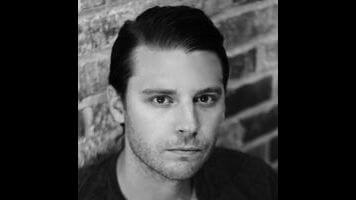Radicals (and goat-ball con men) take their rightful place in history in I Was A Revolutionary

Who are the people who shape a country? How much of their influence is planned or controllable, and how much power—if any—do they wield over the way their contributions will be viewed in the long term? Assuming they’re remembered at all, of course. Andrew Malan Milward’s short-story collection I Was A Revolutionary is a historical book, in that many of its subjects were real-life figures (mostly obscure today), but more specifically it is a book about history: how the past is viewed, how that view changes with time and from viewer to viewer, and what those changes mean.
Consider William Quantrill, the subject of its first story, who was a Confederate guerrilla fighter who led a raid on an abolitionist stronghold. Today, Civil War pop culture omits him from the narrative—historians obviously view him as evil and his cause as futile—but in the lead-up, his supporters saw him as bold and heroic. The way you view the man depends on your perspective and your era (and even his followers turned on him, quitting out of guilt as the cause accrued failures and casualties). And what of the man himself? In Milward’s telling, he was just as focused on returning to his wife as he was his ultimate goal of killing Abraham Lincoln. A revolutionary from afar is just a man in his own eyes; history offers no steady ground to stand on.
The book considers all types of radicals, including the ones who would never think to imagine themselves in such grandiose terms. “Exodusters”—freed slaves who migrated across the country after the Civil War—were just trying to find a place to settle and live quietly, but the movement nonetheless pushed the United States in a new direction. (A subtly different one? One that had massive ramifications? Who can say without a way to repeat the experiment?) When one protests that he’s just a worker, he’s told, “Every black man’s a Moses now.”
While that story follows some of the unknown masses, many are about specific historical figures. These, though, are not narrated by the revolutionaries in question but instead viewed through the lens of intermediary characters like historians and writers, the people most concerned with legacies and influences, the ones tasked with writing the first and subsequent drafts of history, a work Revolutionary makes clear will never be finished. These characters are decidedly not revolutionary themselves; their lives are aimless and restless, their lack of direction thrown into sharp relief by the figures they obsess over. In “The Americanist,” a novelist essentially gives up on life after learning about the insane John Romulus Brinkley, a man who claimed to cure impotence by replacing human testicles with goat ones and later pioneered the use of mass media to lower the level of political discourse (not all broken ground is progress, of course). Finding himself utterly incapable of competing with that, or even to improve on the story with his fiction, the novelist neglects his boyfriend and drifts through life unfulfilled. (Sly revolutions exist on the margins: The boyfriend works for George Tiller, the doctor who would later be assassinated by anti-abortion radicals, while as a gay man living in 2004 Kentucky. The narrator’s relationship is a statement whether he wants it to be or not.)
Through these “small” lives, Milward not only adds scale to the primary figures but explores how history is shaped and formed. In one story, a historian scrambling for a book-proposal idea decides to defend a discredited work of historical analysis, essentially out of desperation. In another, a writer uses little of an eyewitness’ reflections in favor of other sources, creating a portrait the witness views as skewed. Such are narratives formed and codified.
I Was A Revolutionary offers so much thematic meat to chew on that the patchiness of the writing can be forgiven, which is—as is common with collections—hit or miss from piece to piece. Some of the stories drag, spending too much time on scene setting or obfuscating the central theme through needlessly complex structures. (There’s a real range in how well the divide between historical figure and modern narrator works from story to story.) Milward has mixed results capturing the voices of different eras through dialogue, though generally he’s convincing. Most importantly, the philosophical questions he poses linger.
Milward is a Kansas native, and all the stories concern the state. (More specifically, he’s from Lawrence, where Quantrill’s Raid occurred.) As it happens, the book is coming out not long after The New York Times published “The Kansas Experiment,” a look at the state legislature’s attempt to make radical changes. In a bizarre coincidence, the article is essentially a Milward story in and of itself, narrated by a person examining a real figure (the author is a journalist, and the representative he focuses on is his uncle). Reading the Times article recalls I Was A Revolutionary vividly, and not simply for the coincidence of the similarities. What will be the impact of the legislature’s changes? How will we feel about them in 50, 100 years, and how will those feelings change depending on who is feeling them? These are critical questions of history, and as Milward’s fascinating book makes clear, they’re perhaps the most important.